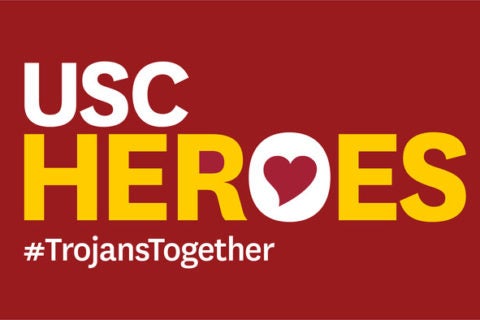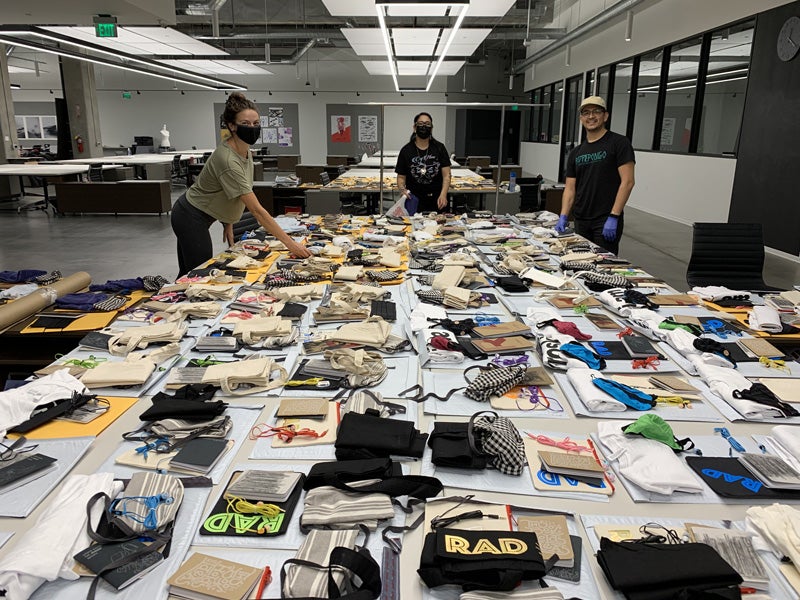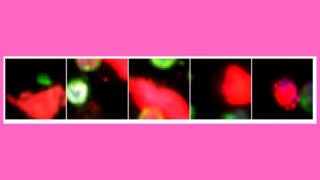
(Photo/Gregg Segal)
USC Street Medicine Team Cares for L.A’s Homeless in a Pandemic
These health care professionals treat some of L.A.’s most vulnerable on the streets they call home.
Mike expected to see no sign of Brett Feldman and his medical team for months.
Pedestrians and cars had vanished from the streets overnight as the coronavirus pandemic forced Californians into self-isolation. Mike figured he would have to manage his diabetes and heart disease on his own for a while — just like the many others who live on sidewalks and under onramps in L.A.
…no matter the circumstances, we weren’t going to leave him abandoned.
Brett Feldman
Then Feldman showed up in early May to check on the 63-year-old. Mike’s eyes lit up.
“He was shocked we were leaving our homes to come see him,” says Feldman, a physician assistant and director of street medicine at the Keck School of Medicine of USC. “I think it really drove home how important he is to us and how much we love him and no matter the circumstances, we weren’t going to leave him abandoned.”
Feldman oversees two mobile teams that head to tents and encampments every day to treat patients experiencing homelessness. Each comprises a physician, a physician assistant or nurse practitioner, a nurse and a community health worker.

Social distancing has thrown another complication their way, too.
“Normally, we’re very affectionate with our patients,” he says. “We hug them, we pat them on the shoulder. We’re expressive with our feelings. Now we’ve had to adapt to not doing those things. To me, that’s the most frustrating part. But part of how we view our role is to stand with them in solidarity, no matter what they are going through.”
Pandemic Brings Challenges and Triumphs for USC Street Medicine Experts
Feldman is heartened by the swift response to the pandemic. Government and community groups quickly recognized that these vulnerable people can’t stay safe by staying home. To help them shelter in place, the USC street medicine team put out a call for tents and received dozens of donations. Other materials, including face masks and face shields, have poured in from the Trojan community and beyond.
Collaborations also strengthened among public health, mental health and homelessness services providers, who now share best practices for street medicine during the COVID-19 era. “In this time more than any other, I’ve seen us all come together,” Feldman says.
Yet serious challenges remain. It took until mid-May before the USC street medicine workers received tests to assess the presence of coronavirus in the unsheltered population. Efforts to curb the spread in shelters and crowded areas like Skid Row could be difficult.
Some people seem unconcerned and go about their usual routines. They are accustomed to threats to their health and safety, Feldman says, and COVID-19 is just one more item on a long list of daily dangers. Others worry as they watch society shut down around them.
“They feel completely exposed to a threat that they don’t feel they can adequately protect themselves from,” he says. “They are very, very scared.”
But signs of resilience and kindness persist. When the team visited one man with pancreas and back problems, he invited them into the makeshift shelter he built out of plywood under a freeway. He had rigged a roaster to cook vegetables; a small bed and a few belongings filled out the space.
They chatted for a while. Then, as the health workers prepared to leave, the man offered them a pineapple, a gesture of thanks for their company and compassion.
“That kind of generosity is really a model for all of us,” Feldman says. “That inspires me.”




